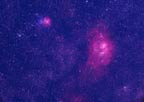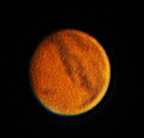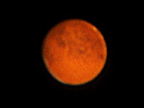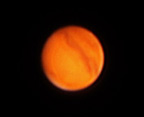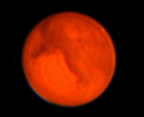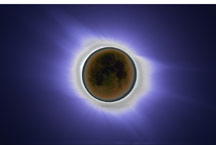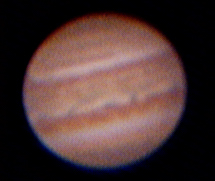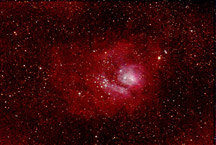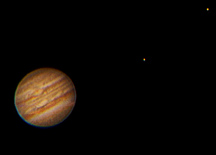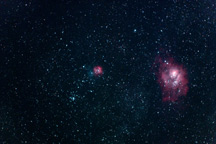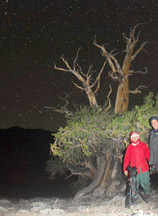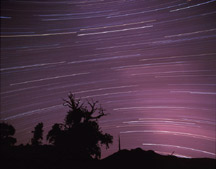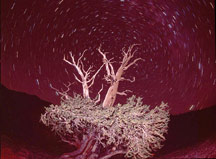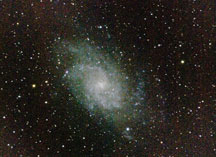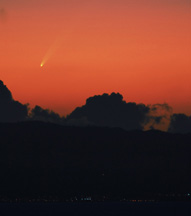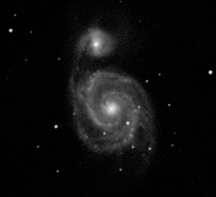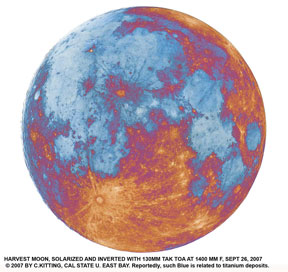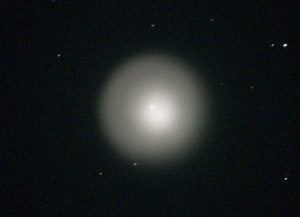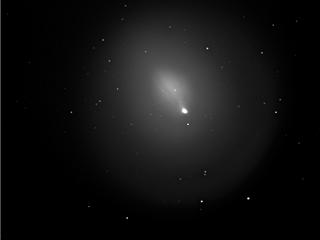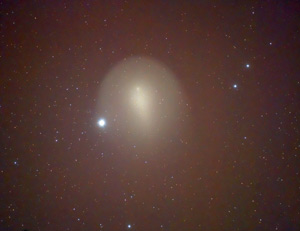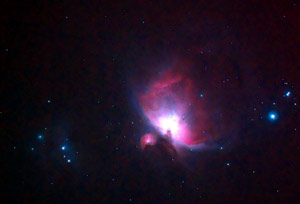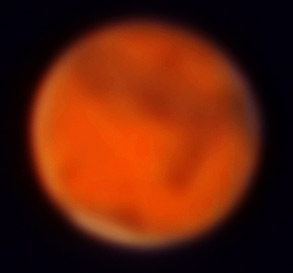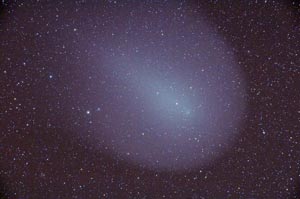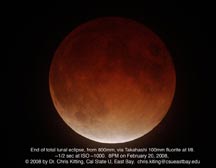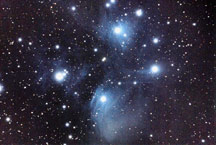
Plieades Cluster. From Barcroft Lab, White Mountains
Aug '06. Prime Focus f/7.7 with my Tak 130mm TOA refractor and Nikon
D 200, on old Tak EM100 mount.
ISO ~1000. ~4 minute exposure. No guiding. Dr. Rick used 'levels' in
photoshop and .jpg'd.
|
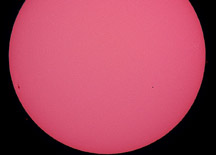
Nov 8, '06 Mercury Transit. Chris Kitting's
pleasantly pink H-alpha sun, a major sunspot group on the left, and Mercury
right center. Takahashi TOA 130mm aperture f/7.7 refractor (1000mm focal
length), Nikon 2x teleconverter 301, and Nikon 10-MP D200 digital SLR.
1/250 sec at ISO 800 (through Coronado 90mm 0.7-A H-Alpha filter) and
1/3200 sec at ISO 125 through Baader thin Photo film. Stack and Photoshop
Curves of two frames, using Keith’s Image Stacker Software on a
Mac Powerbook Computer, for a composite of red and white spectra. North
is up, when image is horizontal, with noticeable small prominence at right
edge, as now. A coronal mass ejection (separated prominence) is near left
edge. © 2006 by Christopher L. Kitting, Ph.D. Cal State U. East Bay,
Hayward CA |
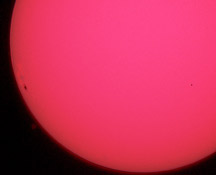
Nov 8, '06 Mercury Transit, cropped from
full frame sun, via Nik 2x teleconverter. Caption much like my previous
Mercury transit caption, but based on ~3 H-alpha and 4 white images, stacked. |
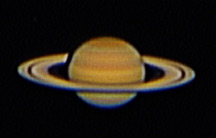
Saturn Dec 30, '06. Takahashi 130mm (fl=1000mm)
scope, Tak 7.5mm eyepiece, Phillips ToUCam Webcam, Mac laptop computer,
Keith's Image Stacker (best 408 of 708 frames, then resampled 4x). Atmospheric
bands are clear. So is the planet's shadow onto its rings, just left of
the planet's sphere. Even a hint of Kepler's Division at the ring extremes,
outside the Cassini Division. |
